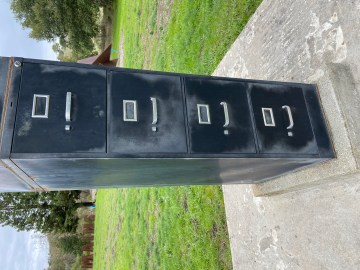
I wish I had a photographic memory. But I don’t. In order to remember something, I typically need to write about it. And as a children’s author, I want to remember the books that I read.
Through the years, I’ve tried several methods to chronicle the books I read. These techniques include the following:
A Reader Response Journal
This is where I note my immediate responses to a book. My writing is sloppy and comes out in a gush. In classrooms, teachers say they enjoy using this method as a way for students to learn how to become close readers. Readers organically engage with texts, and this feels very intimate. Additionally, you don’t have to write about an entire book, you can simply respond to particular passages or chapters.
For me, one of my flaws is that I tend to sometimes write responses on my phone, sometimes in a journal and sometimes as a Word document and they are not collected in one place. But this is separate issue—more about my tendency to shirk from instituting routines/systems. How to organize everything could be its own separate post.
Craft Journal
This is very similar to a reader response journal in that you’re quickly responding to text, but the goals are different. In this sort of journal, I actively search the text for answers to a particular craft question. My reading itself becomes more strategic and less about pleasure. I might read for voice. Or to see how a particular author handles tertiary characters or how she folds in setting. The list goes on and on.
GoodReads
Sometimes I will post a quick review on GoodReads. Ha! I just fibbed. I’m not capable of writing something speedily that will be posted on a social media platform (even on X formerly known as Twitter). I’m not as active on GoodReads as I hoped to be. It seems like a smart way of chronicling books as well as boosting fellow authors. As an author, I really appreciate it when readers post their reviews on GoodReads as well as on retailer websites. However, I think that my ego gets in the way, and I want my review to be clever and it can stop me from posting here. I need to tame my ego!
Book Groups
In the past (pre-motherhood), I have been part of book groups. I love that these groups create community. I’m all in for circle time. As an author I have visited some book groups. I would like to get active in a book group again (but I also worry about time/commitment).
Reels/TikTok
Not me. At least yet. Now that TikTok will likely be banned, I suspect that the action will be on Reels.
How do you chronicle your reading? What works for you? And do you even need to chronicle the books you read? Is it enough to just enjoy them? Ponder them? Love them?
Hillary Homzie is the author of the Ellie May chapter book series (Charlesbridge, 2018), Apple Pie Promises (Sky Pony/Swirl, 2018), Pumpkin Spice Secrets (Sky Pony/Swirl, 2017), Queen of Likes (Simon & Schuster MIX 2016), The Hot List (Simon & Schuster MIX 2011) and Things Are Gonna Be Ugly (Simon & Schuster, 2009) as well as the Alien Clones From Outer Space (Simon & Schuster Aladdin 2002) chapter book series. She’s also a contributor to the Kate the Chemist middle grade series (Philomel Books/Penguin Random House). And her nonfiction picture book, If You Were a Princess: True Stories of Brave Leaders From Around the World is a look at historical and current princesses from many diverse lands who have made their mark (Simon & Schuster, August 2022). During the year, Hillary teaches at Sonoma State University. In the summer, she teaches in the graduate program in children’s literature, writing and illustration at Hollins University. She also is an instructor for the Children’s Book Academy.
She can be found at hillaryhomzie.com and on Instagram, her Facebook page as well as on Twitter

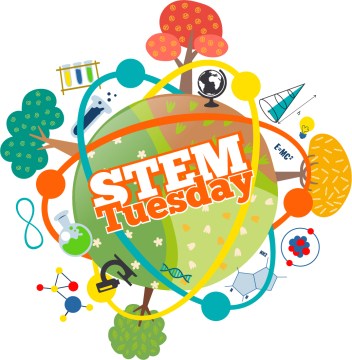
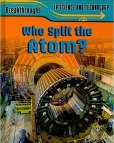 Who Split The Atom? by Anna Claybourne Using a DK-like format, it explores the early history and research into the structure of atoms, the periodic table, radioactivity, and atomic science. Loaded with photographs, graphics, “That’s A Fact!,” “Breakthrough,” and scientific sidebars, as well as vignettes of scientists, it is an accessible and engaging introduction to radioactivity.
Who Split The Atom? by Anna Claybourne Using a DK-like format, it explores the early history and research into the structure of atoms, the periodic table, radioactivity, and atomic science. Loaded with photographs, graphics, “That’s A Fact!,” “Breakthrough,” and scientific sidebars, as well as vignettes of scientists, it is an accessible and engaging introduction to radioactivity.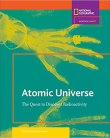 Atomic Universe: The Quest To Discover Radioactivity by Kate Boehm Jerome This National Geographic book uses a running timeline across the top of the pages (from 1800 to 1971), photographs, mini-biographies, and “science booster” sidebars to interest high-low readers in an introductory overview of radioactivity, atomic science, and nuclear reactors.
Atomic Universe: The Quest To Discover Radioactivity by Kate Boehm Jerome This National Geographic book uses a running timeline across the top of the pages (from 1800 to 1971), photographs, mini-biographies, and “science booster” sidebars to interest high-low readers in an introductory overview of radioactivity, atomic science, and nuclear reactors.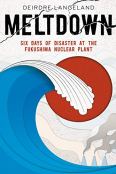 Meltdown: Earthquake, Tsunami, and Nuclear Disaster in Fukushima by Deirdre Langeland On March 11, 2011, the largest earthquake ever measured in Japan occurred off the northeast coast. It triggered a tsunami with a wall of water 128 feet high that ripped apart homes and schools, damaging Fukushima’s nuclear power plant and causing a nuclear meltdown. Chapters describe the events as well as the science of nuclear reactors. Each section begins with a readout of reactor status, from “offline” to “meltdown” with the last chapter exploring lessons learned.
Meltdown: Earthquake, Tsunami, and Nuclear Disaster in Fukushima by Deirdre Langeland On March 11, 2011, the largest earthquake ever measured in Japan occurred off the northeast coast. It triggered a tsunami with a wall of water 128 feet high that ripped apart homes and schools, damaging Fukushima’s nuclear power plant and causing a nuclear meltdown. Chapters describe the events as well as the science of nuclear reactors. Each section begins with a readout of reactor status, from “offline” to “meltdown” with the last chapter exploring lessons learned. Radioactive!: How Irène Curie and Lise Meitner Revolutionized Science and Changed the World by Winifred Conkling This gripping dual biography provides an in-depth look at the discoveries, life-long personal sacrifices, and professional struggles that Irène Curie and her husband Frédéric Joliot-Curie made in discovering artificial radiation and Lise Meitner made in discovering nuclear fission. It also touches on Marie and Pierre Curie’s discovery of natural radiation, society’s grappling with radiation, World War II, and the atomic bomb. Includes a timeline, Who’s Who section, black and white photos, and fascinating sidebars further explaining the science.
Radioactive!: How Irène Curie and Lise Meitner Revolutionized Science and Changed the World by Winifred Conkling This gripping dual biography provides an in-depth look at the discoveries, life-long personal sacrifices, and professional struggles that Irène Curie and her husband Frédéric Joliot-Curie made in discovering artificial radiation and Lise Meitner made in discovering nuclear fission. It also touches on Marie and Pierre Curie’s discovery of natural radiation, society’s grappling with radiation, World War II, and the atomic bomb. Includes a timeline, Who’s Who section, black and white photos, and fascinating sidebars further explaining the science.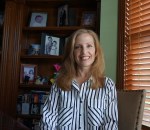

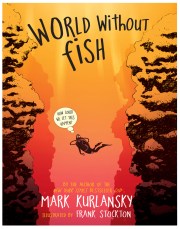

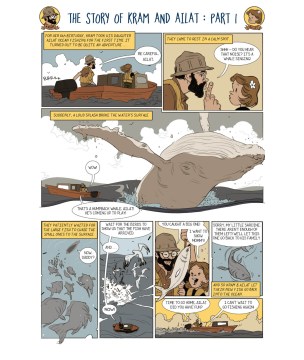 In World Without Fish, the subject is of course fish. The content is what is happening to fish, the impact of fishing, and possible solutions to maintaining the oceans environmentally and economically. Now this might be exciting to read just the text, but to some students, it might not. So the publishing team has taken creativity to the form – the book and type design, the colors, the styles and size – to make a book where the content fairly jumps off the page and engages young readers with energy. It includes a comic series that appears at regular intervals throughout the book. So we have the art of “visual narrative” to further the content and engage all types of learners.
In World Without Fish, the subject is of course fish. The content is what is happening to fish, the impact of fishing, and possible solutions to maintaining the oceans environmentally and economically. Now this might be exciting to read just the text, but to some students, it might not. So the publishing team has taken creativity to the form – the book and type design, the colors, the styles and size – to make a book where the content fairly jumps off the page and engages young readers with energy. It includes a comic series that appears at regular intervals throughout the book. So we have the art of “visual narrative” to further the content and engage all types of learners.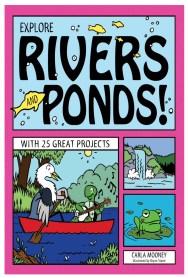
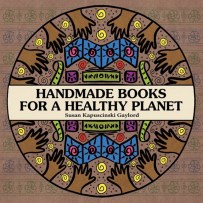
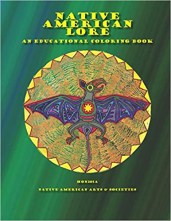
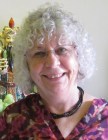 England, and a lifelong learner. Her publishing credits include picture books, poetry, articles, and illustration. Her latest publishing project is an anthology with her writers’ group, the Magic Storymakers, titled Kaleidoscope for Kids.
England, and a lifelong learner. Her publishing credits include picture books, poetry, articles, and illustration. Her latest publishing project is an anthology with her writers’ group, the Magic Storymakers, titled Kaleidoscope for Kids.